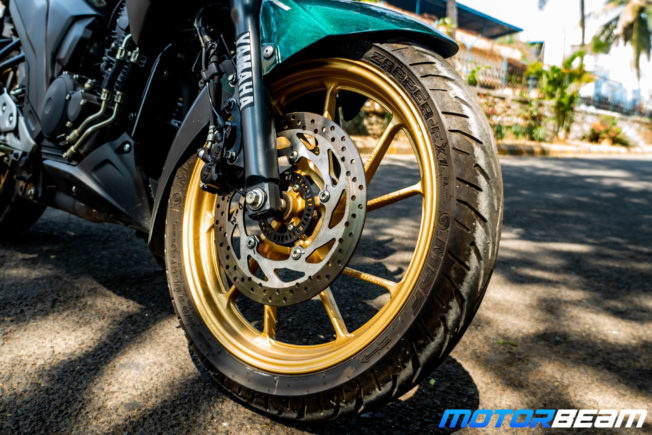Suzuki Gixxer 250 vs Yamaha FZS 25 – Shootout
Detailed comparison and shootout between the premium commuters, the Suzuki Gixxer 250 and the Yamaha FZS 25
Detailed comparison and shootout between the premium commuters, the Suzuki Gixxer 250 and the Yamaha FZS 25
Home » Bike News » Yamaha FZ25 » Suzuki Gixxer 250 vs Yamaha FZS 25 – Shootout
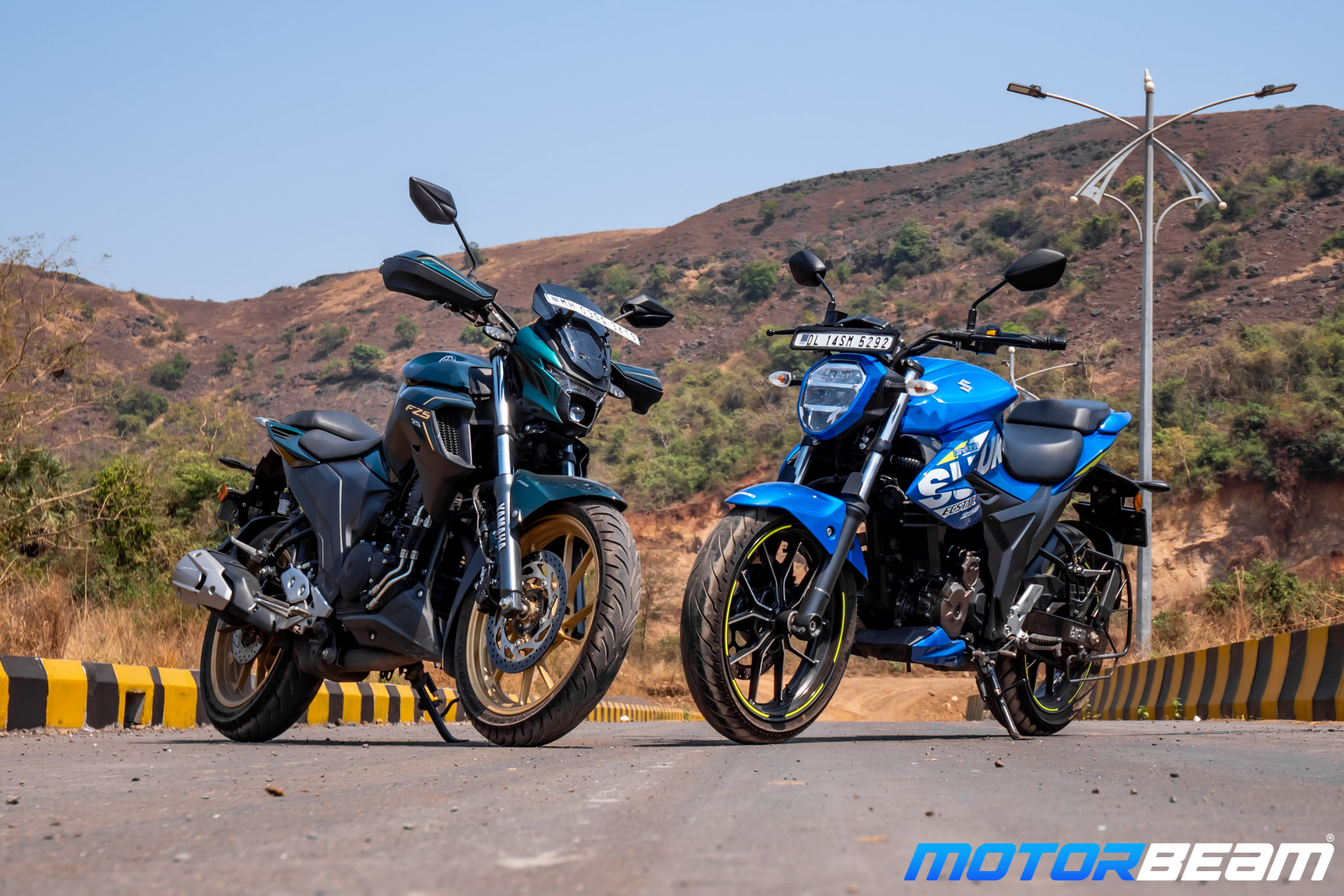
Shootout No. 250
Price OTR Mumbai: Rs. 1,99,500/- (Suzuki Gixxer 250); Rs. 1,87,500/- (Yamaha FZS 25)
Both the Japanese motorcycles give a tough competition to each other and have a widespread fanbase across the nation
With the launch of the FZ in 2008, Yamaha ignited the premium commuter segment in India. The FZ set the benchmark with its amazing performance and stylish looks. As time went by and the human desire went up, people wanted a more fun-filled commuting experience. Listening to the demand, Yamaha launched the FZ 25 in 2017 and it was a very decent package. On the other hand, Suzuki launched the Gixxer 250 in 2019 and it stood as a tough competitor to the FZ. Now, that we have the latest BS6 versions of both bikes, we pitch them against each other to see which one suits you better.
MotorQuest: Both the bikes are from Japan – the land of the rising sun. Yamaha launched the FZ 25 in 2017, along with its fully-faired sibling, the Fazer 25 which has now been discontinued. While Suzuki launched the Gixxer 250 in 2019 along with its faired sibling, the Gixxer SF 250.
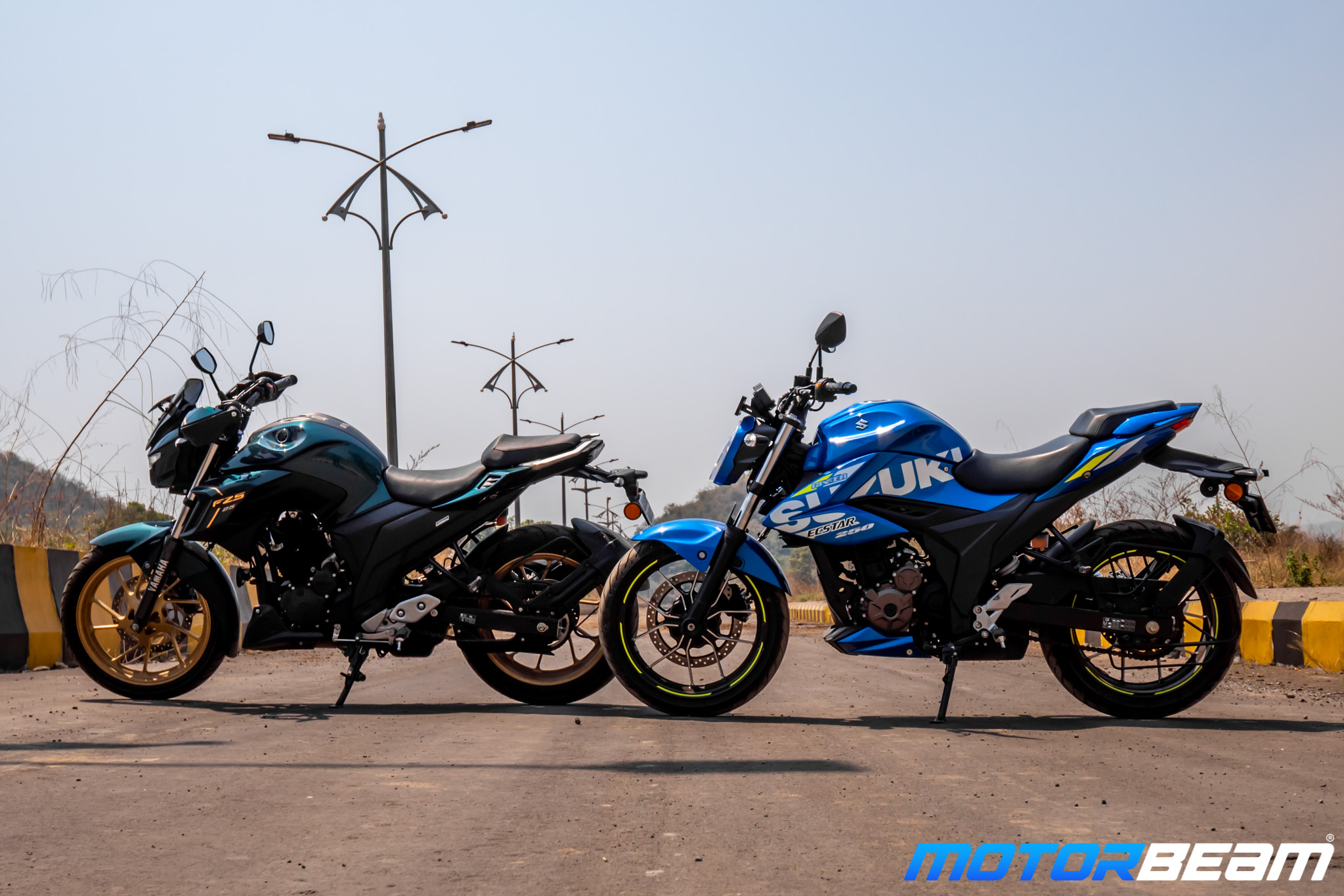
Styling: Both bikes are surely dressed to impress with their bold streetfighter designs. However, styling wise, not a lot has changed on either of them. The FZ gets a minor facelift with changes being restricted only to the face of the motorcycle and the addition of a new “S” variant. The Gixxer continues with the same design and only gets new paint schemes. The new fascia of the FZ oozes a very futuristic charm with its Transformer-like face and aggressive tank shrouds while the Gixxer still manages to look modern and retains its mature face. In common, both bikes offer halogen indicators as standard which is disappointing however, Yamaha offers LED indicators as an optional extra for Rs. 1500/- whereas no such option is available on the Gixxer. The FZS gets a smoked visor and knuckle guards which are not offered as standard on the Gixxer.
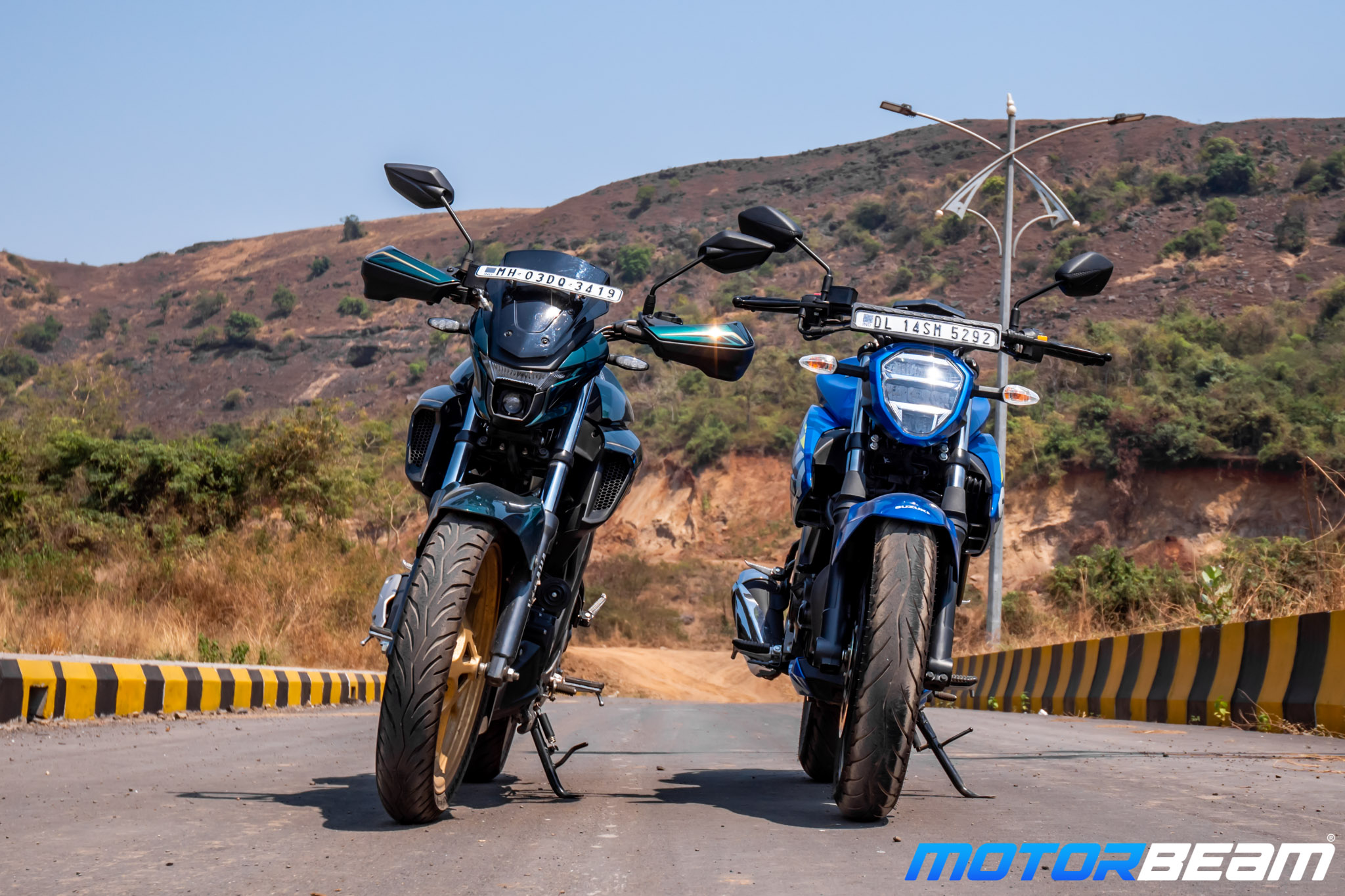
Though the FZ is an older product, it still manages to look future-proof with the new design update
The tank on the FZ looks very beefy with sharp angular lines while the Gixxer gets a smoother design for its tank, however, the shrouds on the Gixxer are quite sharp and look dynamic. From the sides, the golden wheels on the FZS grab a lot of attention but, the Ecstar livery on the Gixxer steals the show! The engine on the Gixxer is finished in a really unique ivory shade. Coming to the rear profile, the LED taillight on the FZ reminds us of the Apache, while the Gixxer looks quite modest. Talking about colour options on the FZ, the standard variant is available in simple blue and black colour options whereas the S variant is available in Patina Green, Matte Blue and Matte White. While the Gixxer is offered in only two colour options – Matte Black and Triton Blue with Ecstar livery.
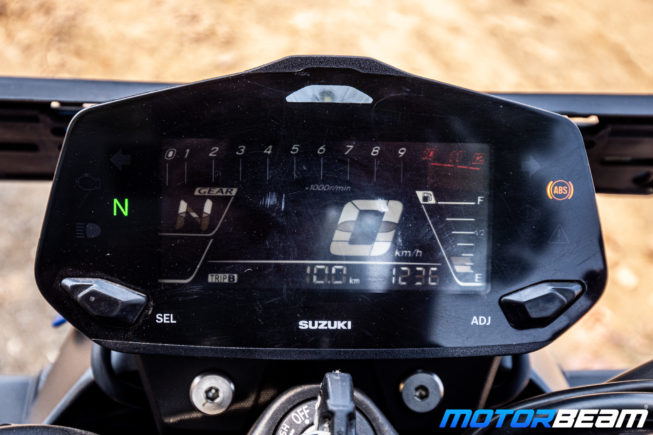
Instrument Cluster and Switchgear: Like the FZ, the Gixxer also gets a negative LCD cluster but that’s where the similarities end. As obvious, the Gixxer gets a much bigger display that is quite easy to read. Apart from displaying all the basic items like a tachometer, fuel gauge, odometer, twin trip meters, etc. it also hosts a gear position indicator, service reminder, a clock, and an LED shift light that can be configured according to your liking. Strangely, it doesn’t display average mileage, range and lacks Bluetooth connectivity too. Considering the price of this bike, such omissions are a bit hard to digest.
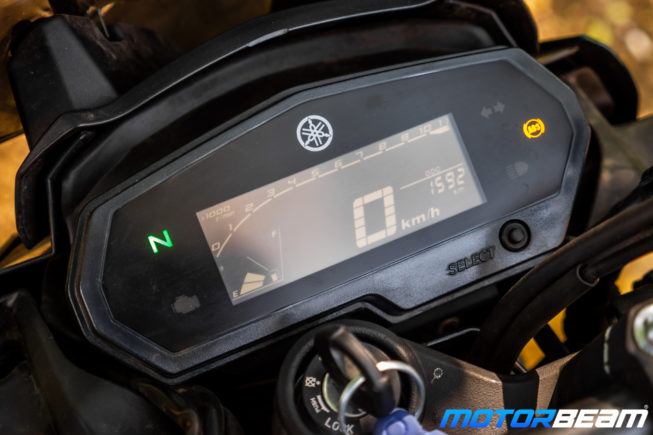
A quick glimpse at the instrument cluster on the FZ and one might conclude that it looks way too old to be offered in 2021. And we agree to that too, the massive bezels surrounding the display are to be blamed for that. Nevertheless, it only offers the basic information like a tachometer, fuel gauge, twin trip meters, odometer, etc. and lacks a gear position indicator and mileage related data but, for the most part, it will get the job done. But we really wished that the FZ got the MT-15’s cluster instead.
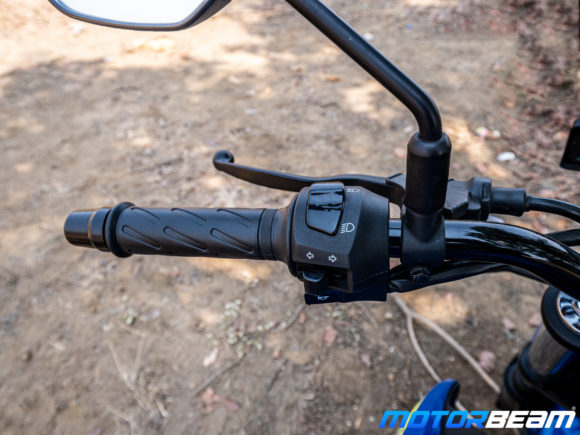
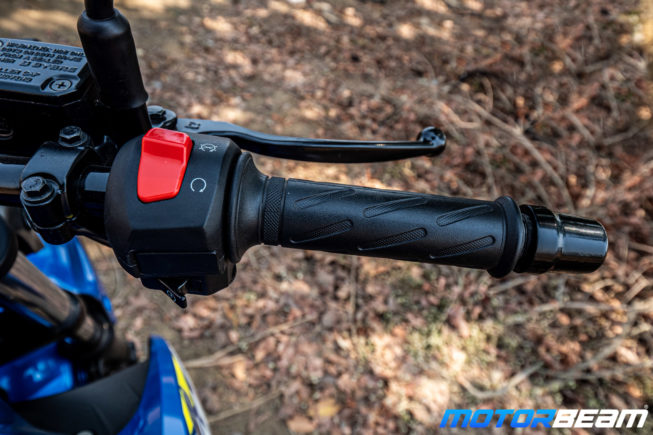
Both bikes have similar instrument cluster but the size and layout of the Gixxer’s cluster is much better
The Gixxer gets a very traditional switchgear setup. On the left, you have a pass-light switch, high-low beam switch, indicator switch and a horn button. And on the right, is an engine kill switch and a single touch starter button. However, the patch to cover the headlight on-off switch on the right switchgear looks a bit shabby. Nonetheless, we really like the piano finish on the high-low beam switch and the engine kill switch. The overall quality of the switchgear is decent and the buttons offer nice clicky feedback.
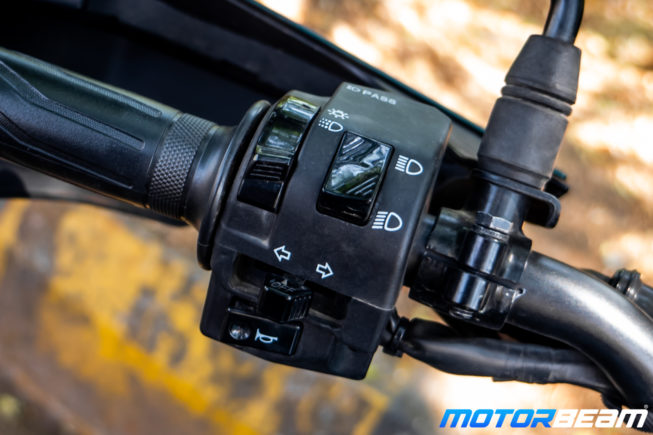
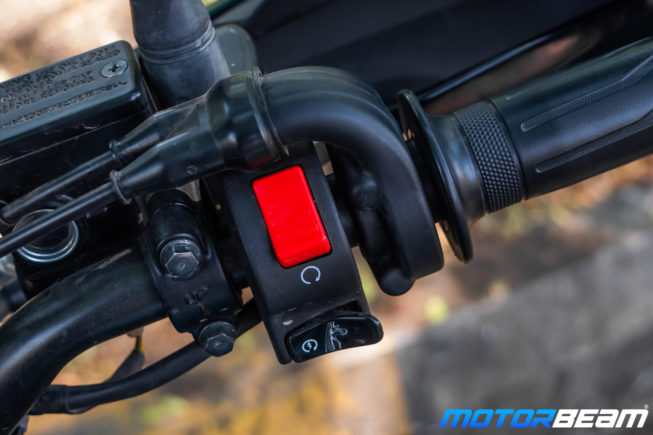
The switchgear on the FZ is a lot different. Starting with the left switchgear, it gets a dedicated button to switch between DRL mode and headlamp mode which is a nice touch. Just beside that, you have a high-low beam switch followed by an indicator switch, and lastly, there is the horn button. The right switchgear is very compact and it houses an engine kill switch and an engine starter button. However, we believe that the throttle cables on the right could have been routed in a better way. Nevertheless, the switchgear quality feels a tad better on the FZ but the buttons don’t feel as tactile as on the Gixxer.
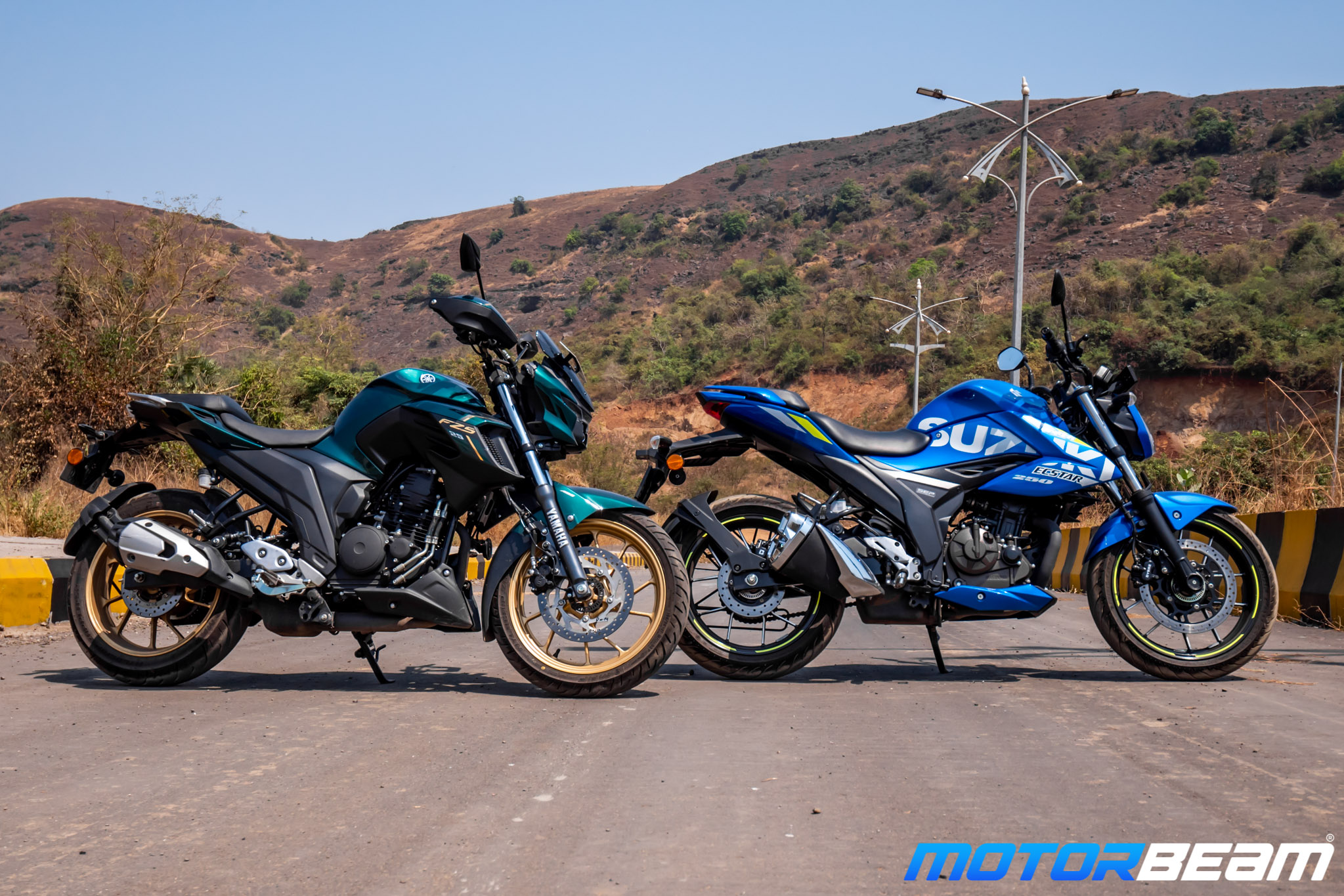
Ergonomics: Commonly, both bikes are urban street-fighters that aim to be comfortable commuters too. Let’s discuss the Gixxer first. The seat height is 800 mm which is well suited for tall as well as short riders. Moreover, the tank has a generous recess to lock your knees and it is comfortable for taller riders too. The combination of center set footpegs and a slightly forward set handlebar results in a somewhat leaned in riding posture. The rider’s seat is quite spacious and well-cushioned however, the pillion seat isn’t wide enough to keep a healthy adult comfortable on a long journey. Lastly, the mirrors are easily adjustable and offer a good view of what’s behind. Overall, the Gixxer offers balanced ergonomics and feels comfortable and sporty at the same time.
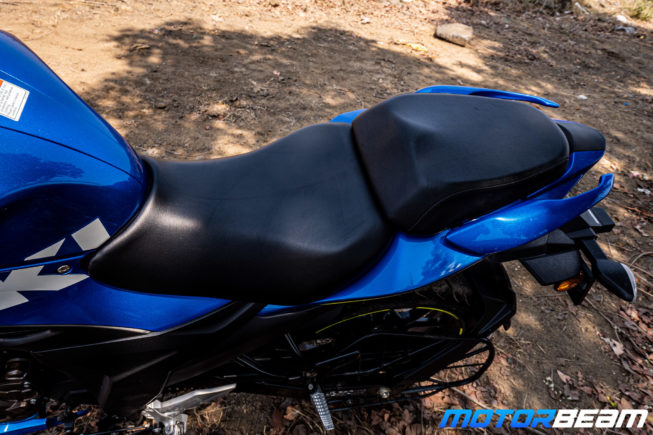
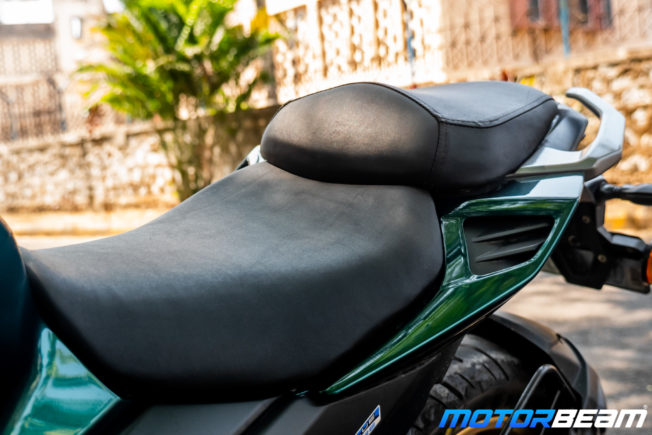
The FZ on the other hand is more directed towards comfortable commuting. Here, the seat height is at 795 mm which is a bit more accessible than the Gixxer. However, the knee recess feels similar to that of the Gixxer. The riding posture on the FZ is very upright as the footpegs are center set and the handlebar is slightly taller than the Gixxer. Mirrors offer a decent view of what’s behind but, they aren’t as wide. The rider seat is quite spacious and offers much better support to your inner thighs. Also, the pillion seat is apt for the long-haul too. In conclusion, if you want a simple and comfortable riding posture, the FZ should be your choice, but if you want an engaging riding posture without compromising much on comfort, the Gixxer is the one for you.

Performance: In common, both bikes have a 249cc single-cylinder engine. The engine on the Gixxer pumps out 26.5 BHP @ 9300 RPM and 22.2 Nm of torque, while the Yamaha motor has a torquey tune and produces 20.51 BHP and 20.1 Nm of torque. In terms of engine refinement, it’s a very tough fight between the two. Both bikes are buttery smooth just like a Japanese motor should be but, due to its torquey nature, the FZ feels a bit harsh in the top end whereas the Gixxer tends to vibrate a bit more than the FZ. But for the most part, you wouldn’t complain about the NVH levels on either motorcycle. However, one major point of differentiation here is the gearbox. The Gixxer gets a 6-speed unit whereas the FZ gets a 5-speed unit. And this single-handedly makes the Gixxer a better option for highway duties.
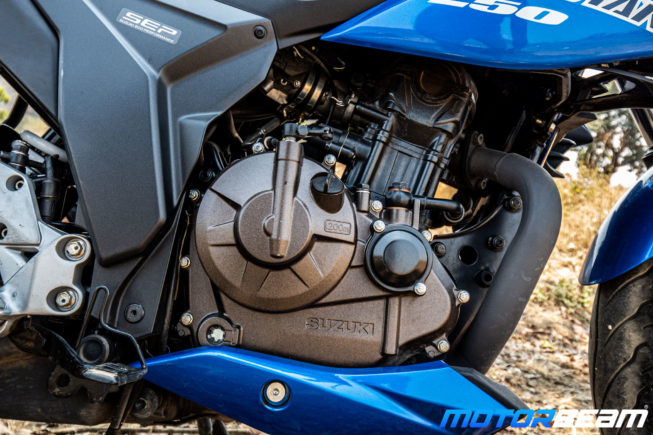
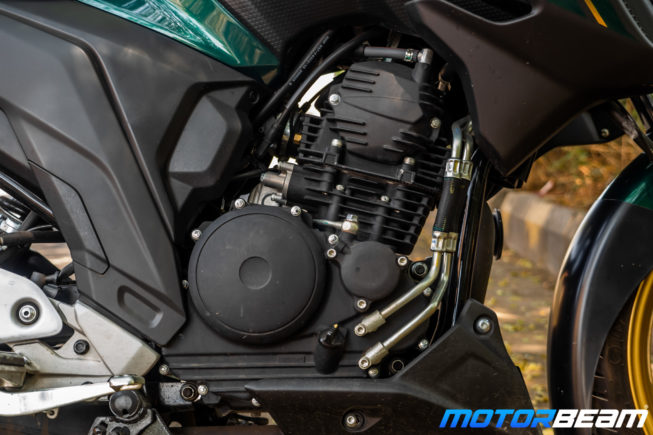
The exhaust note of Gixxer sounds smooth and a bit bassy, but the FZ sounds much bassy and rumbly
Since the power delivery is very similar on both motorcycles, the city performance feels similar. The low end feels just about enough while the mid-range is the most concentrated and as the revs climb higher, both bikes feel quite flat. However, the Gixxer gets a very efficient oil-cooling system and manages to remain cooler than the FZ even in bumper-to-bumper traffic. On our VBOX test, the Gixxer hit the ton in 9.05 seconds and maxed out at 134 km/hr while the FZ pulled it off in 10.63 seconds and maxed out at 130 km/hr. Clearly, the Gixxer surpasses the FZ in terms of performance but, the FZ outshines the Gixxer when it comes to fuel economy. The Yamaha FZ returns a brilliant fuel economy of 40 km/l whereas the Gixxer manages to fetch 32 km/l. Also, the FZ gets a larger, 14 liter fuel tank which can serve you for 560 km as opposed to the 12 liter tank on the Gixxer which can last for 380 km.

Riding Dynamics: Both the motorcycles are underpinned by the diamond frame chassis and have a similar suspension setup. While filtering through traffic, the FZ feels very light and nimble whereas the Gixxer feels slightly heavy but offers ample feedback. However, the Gixxer loves being tipped into corners and always feels extremely eager to lean into a corner whereas the FZ feels a bit bland when compared to the Gixxer. Overall, if you want to fulfil your corner cravings, the Gixxer is the one for you but if you want an easy to manoeuvre city bike, the FZ is a good option.

As mentioned before, both the bikes share a similar suspension setup with conventional telescopic forks at the front and a mono-shock at the rear. Yet, the suspension tune on the FZ is more supple and the bike absorbs most of the bumps and potholes effortlessly. And on the other hand, the suspension on the Gixxer feels a bit stiff over bad roads as it is tuned more towards spirited riding and offers unmatched high-speed stability in this price bracket. The ground clearance on both bikes is enough, however, at 165 mm, the Gixxer has a higher ground clearance while the FZ manages with 160 mm. Overall, if your encounter broken roads on a daily basis, we suggest you get the FZ. But, if you want to enjoy zipping through the city, the Gixxer is the right choice.

On the twisties, the Gixxer loves to be leaned and pushed, while the FZ likes to take things easy
Lastly, let’s discuss the tyres and brakes. Commonly, both bikes get MRF rubber but, the Gixxer gets wider tyres which provide sufficient grip in both dry and wet riding conditions but tend to lose traction when you try to go a bit hard on dusty patches. On the other side, the FZ feels under-tyred as the rear doesn’t inspire much confidence. Moving on, the braking performance on the Gixxer is better than the FZ as it gets a bigger 300 mm front disc, while the FZ gets a 282 mm front disc. Both bikes come with well-calibrated dual-channel ABS which ensures a safe halt.
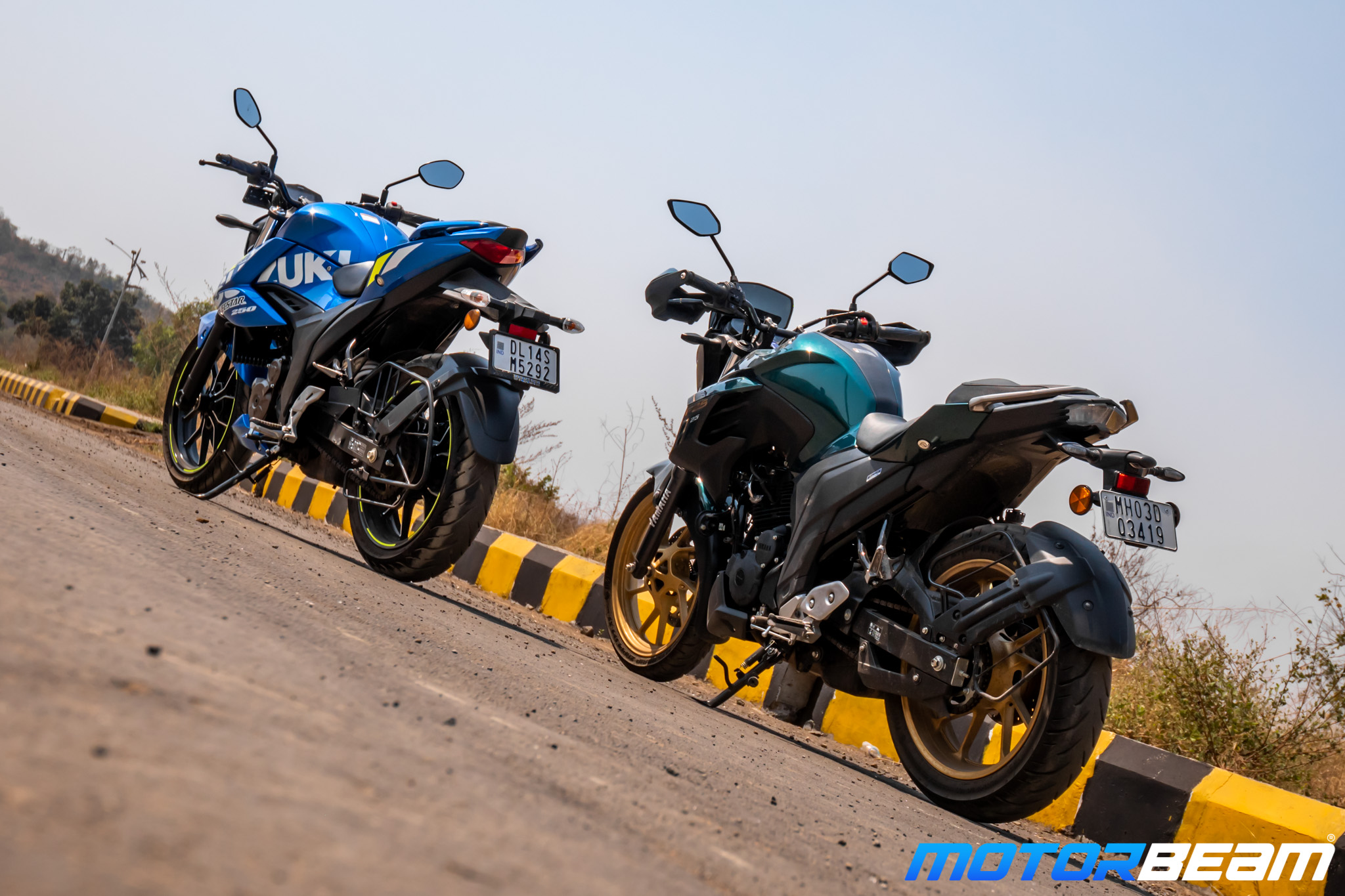
Verdict: The Suzuki Gixxer 250 costs Rs. 1,99,500/- (OTR Mumbai) while the FZS 25 costs Rs. 1,87,500/- (OTR Mumbai). It is quite evident that the Gixxer asks for a hefty premium and makes it up to you with its dynamic ride and handling balance. If you want extreme value for your money and, comfort and fuel economy are your topmost priorities, you will be more than happy with the FZ. However, if you want a performance-oriented commuter bike you should look at the Gixxer. Overall, we feel that the Gixxer appeals to a much younger audience while the FZ targets a much mature audience who want a no-nonsense companion that can stay with them until forever.
